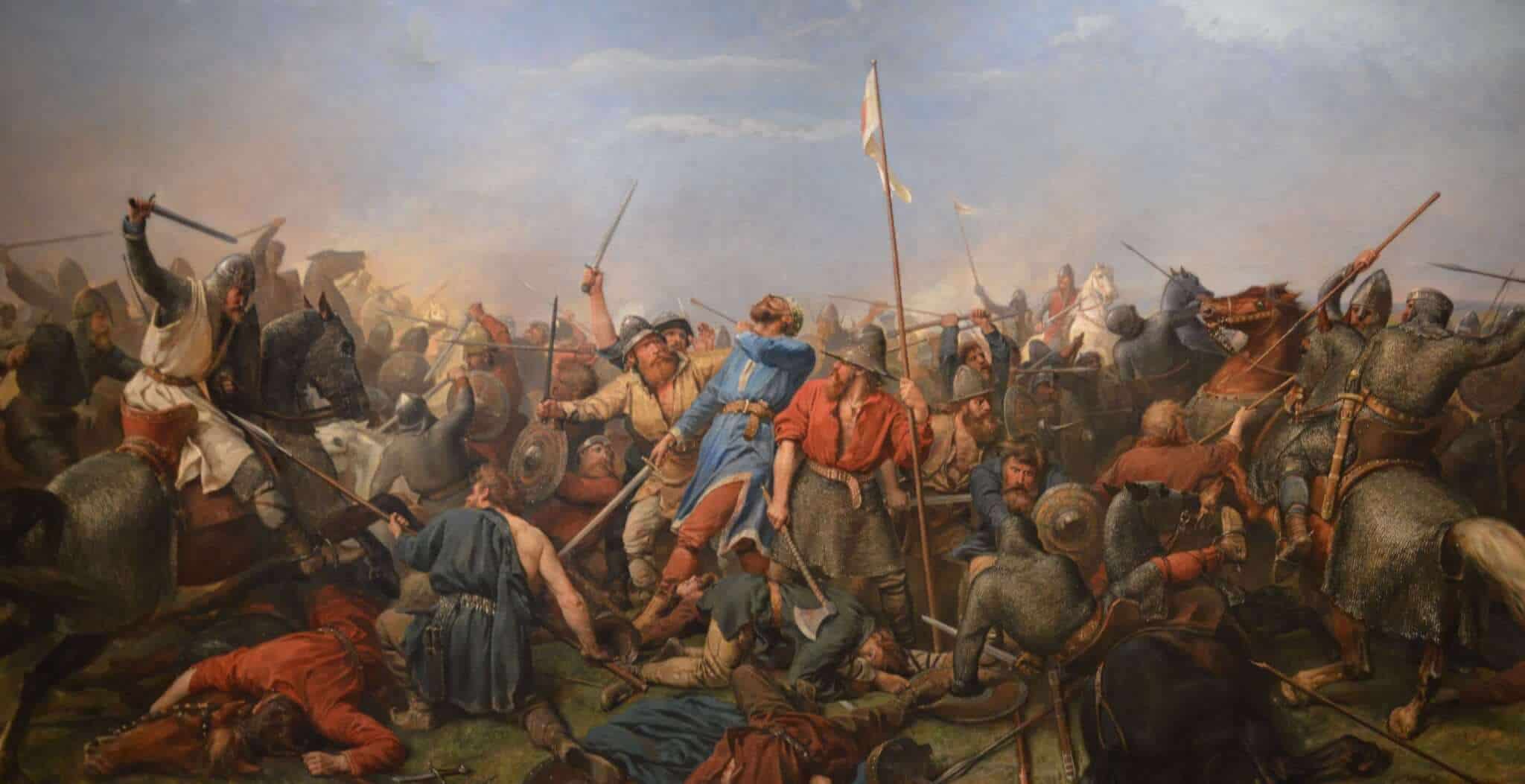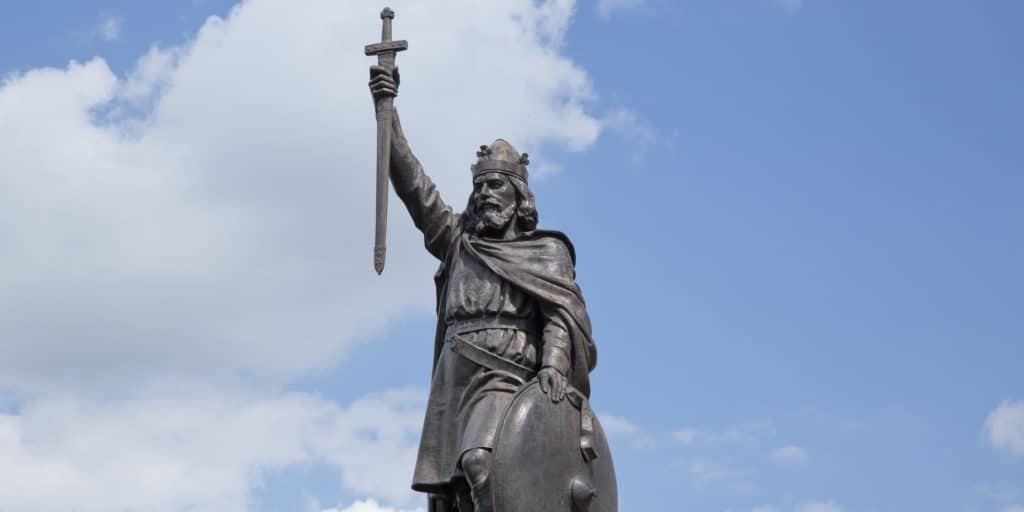Alfred the Great, King of Wessex, a defender against Viking invasion and a social reformer; just few of the reasons why he is the only English monarch to be known as “the Great”.
Alfred was born in 849 and served as King of Wessex, a Saxon kingdom based in the southwest of modern day England, from 871 to his death on 26th October 899 AD. In this time he ruled successfully over his Anglo-Saxon kingdom and emerged as a military force, a strong leader and a promoter of reforms. His most important achievement was to prevent an island-wide invasion from the Danes and establish a united Anglo-Saxon culture.
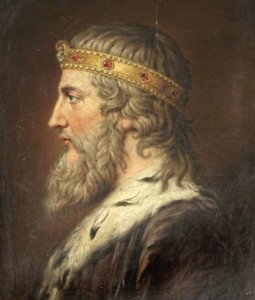
Alfred’s father was King Aethelwulf, which translates from Old English as “Noble Wolf”, King of the West Saxons. He is said to have had six children, one of whom was Alfred, born at Wantage, Oxfordshire. Being the fourth or fifth child in line to the throne, it had seemed unlikely that Alfred would ever reign over his kingdom. Each of the sons succeeded to the role of king in turn. Alfred was still only a young boy when on 13th January 858 his father died, leaving Alfred’s older brothers to take control.
By 868 Alfred was recorded as having fought alongside his brother Aethelred, fighting what was proving to be a constant threat of attack from the Danes. Two years later, at the Battle of Merton in March 871, Alfred and his brother suffered a serious defeat by the Danes. His brother, the king, died a month later and Alfred was left to rule as leader of the Saxon kingdom.
In May at Wilton, Alfred and his Saxon army suffered another defeat. Sensing that they could not drive out the Danish invaders from their land, he was forced to make peace with them instead. This decision resulted in the Vikings temporarily withdrawing to London and subsequently occupying the majority of England for the next five years.
By the year 876, the Danes had regrouped and made their assault on Wessex. The occupation of Wareham forced Alfred to negotiate a more permanent peace deal… a deal that disintegrated almost as soon as it was sealed.

The conflict raged on with Alfred making a strategic calculation to blockade Danish ships, forcing the Vikings to withdraw to Mercia. In January the following year, the Danes pushed ahead once more, attacking Chippenham which – at the time – served as the royal household of Alfred the Great. The element of surprise meant that Alfred and his people were completely taken off guard, resulting in a high death toll and forcing the king and a small band of men into the nearby woods.
In the spring of the same year, Alfred and his remaining men managed to build a fort in the Somerset marshland at Athelney. Athelney was essentially an island in the marshes, an advantageous position away from the Danes which bought Alfred enough time to rally together the local militia. Men came from nearby towns and villages to form a tight resistance movement: the conflict had begun to take on a guerrilla style of combat.
These tactics ultimately proved to be successful. From his hidden position in the Somerset marshland, the king and his men tackled the Danes for seven weeks. Alongside the skirmishing, Alfred was also assembling a formidable army which would soon go on to defeat the invaders at the Battle of Edington. This proved to be a decisive victory for the Saxon King, forcing the Danes to surrender and securing the baptism of their King Guthrum, with Alfred serving as his sponsor, and thus securing long-term peace.
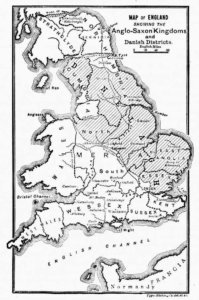
After this success, an agreement was negotiated by Alfred known as the ‘Danelaw’. This was a treaty designed to divide England. The Danes were to take control of the north and east, with Alfred and the Anglo-Saxons taking Kent, West Mercia and their original kingdom of Wessex. Although the proceeding years would be far from completely peaceful (the Danish still made regular raids in to Anglo-Saxon territory), a sense of normality and security was restored in Anglo-Saxon Britain.
In the years after Danelaw, Alfred also took the time to address the need for defence. Keen to reflect on where he and his army had previous fallen short, the Saxon King took time to challenge traditional army structures and introduce new methods to deal with the continuous threat from overseas. Building work took place, ensuring that the settlements across southern England would be fortified against possible future invasions. These were known as burhs and formed a well-designed fortified settlement system extending across the south.

Alfred also took tentative steps in establishing a navy to tackle the naval capacity of the Danes on the English coastline. As described in the Anglo-Saxon Chronicle, this proved successful as the ships were larger, steadier and swifter in the water, using a design inspired by the Greek and Roman warships which were designed as fighting ships with high sides, instead of low sided vessels deemed fit only for navigation.
In order to maintain a defence system with long-lasting effects, Alfred introduced a tax and conscription system. This was largely based on the productivity of a tenant’s landholding. The ‘hide’ as it was known was the tenant’s obligation to the community, based on the quality of the land owned. The services provided by the landowner would be judged accordingly. This kind of structure helped to ensure security for the future of the kingdom.
The same principles of organisation and structure were applied to the judicial system pioneered by Alfred. Seeking a new law and order approach, Alfred insisted on judges with certain desirable qualities, such as being literate, having a sharp mind, a good education and astute knowledge of the law. Without such qualities, Alfred deemed them to be unworthy to serve in office.
Another important step taken by Alfred was in his approach of unifying kingdoms that had previously operated separately. Under his leadership, a more unified Anglo-Saxon culture was forming. He commissioned the Anglo-Saxon Chronicle, a vital document for the time which promoted the unification of England, but also a valuable document today allowing us to learn so much information about this period of English history.
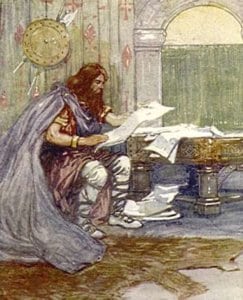
Alfred’s reforms and ideas were applied to the education system developed during his reign. He placed much importance on translations from Latin to English in order to establish a wider array of books accessible for learning and intellectual pursuits. Furthermore, inspired by the example set by Charlemagne, he introduced court schools, a system providing a sound education not only for the nobility but also those with lesser status. He ensured the best scholars would teach in these schools, with curricula dedicated to the liberal arts. Alfred’s keen intellectual disposition was evident in the way he chose to reform, develop and improve Anglo-Saxon society under his reign.
On 26th October 899 Alfred died from unknown causes, most probably caused by poor health experienced early on in his life. Alfred left behind an extraordinary legacy, reforming the traditions and structure of early English society, maintaining peace in uncertain times and introducing structure, judicial processes and education which left a considerable cultural impact on the generations that followed.
By Jessica Brain
Published: 1st April 2019



